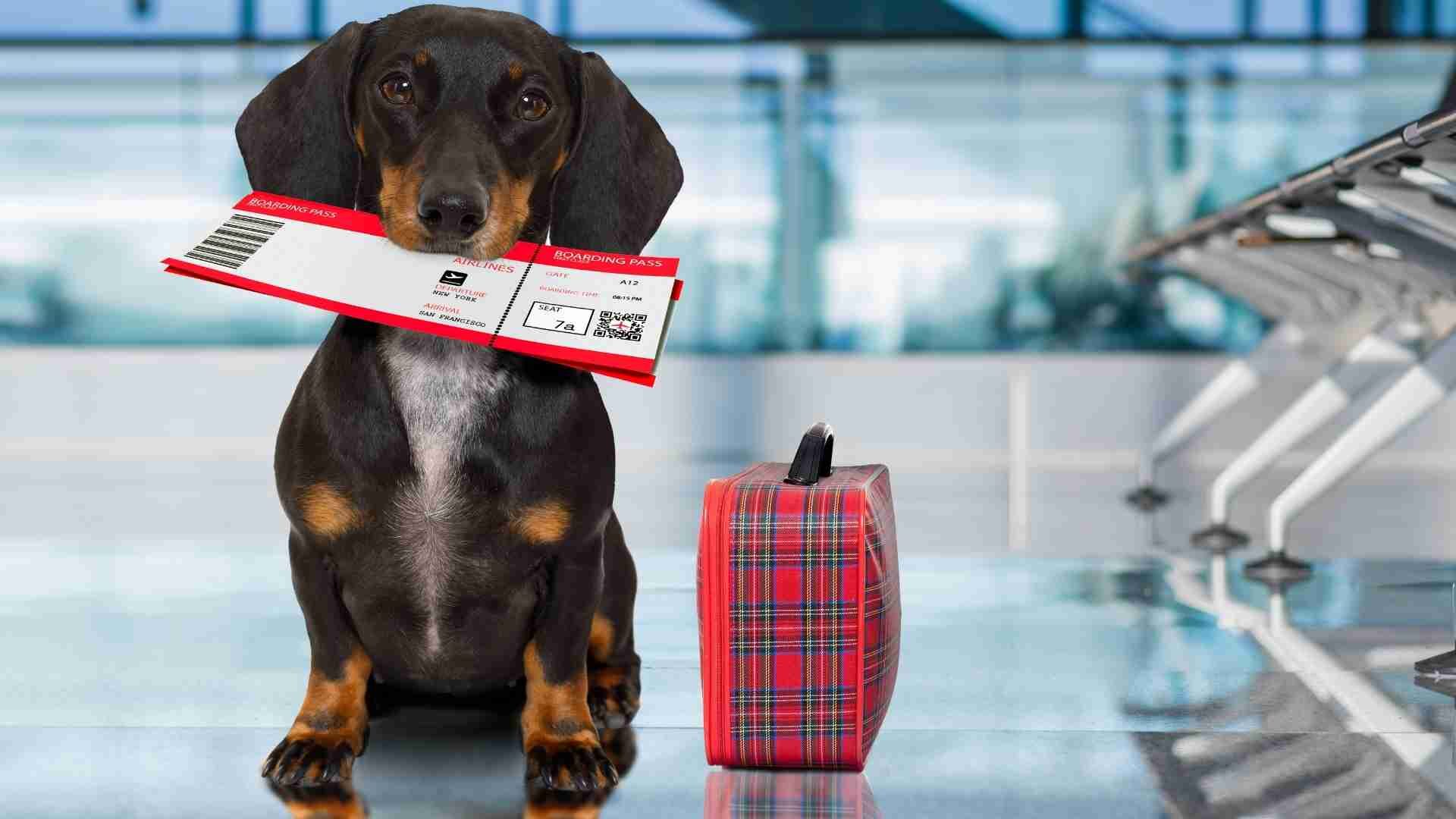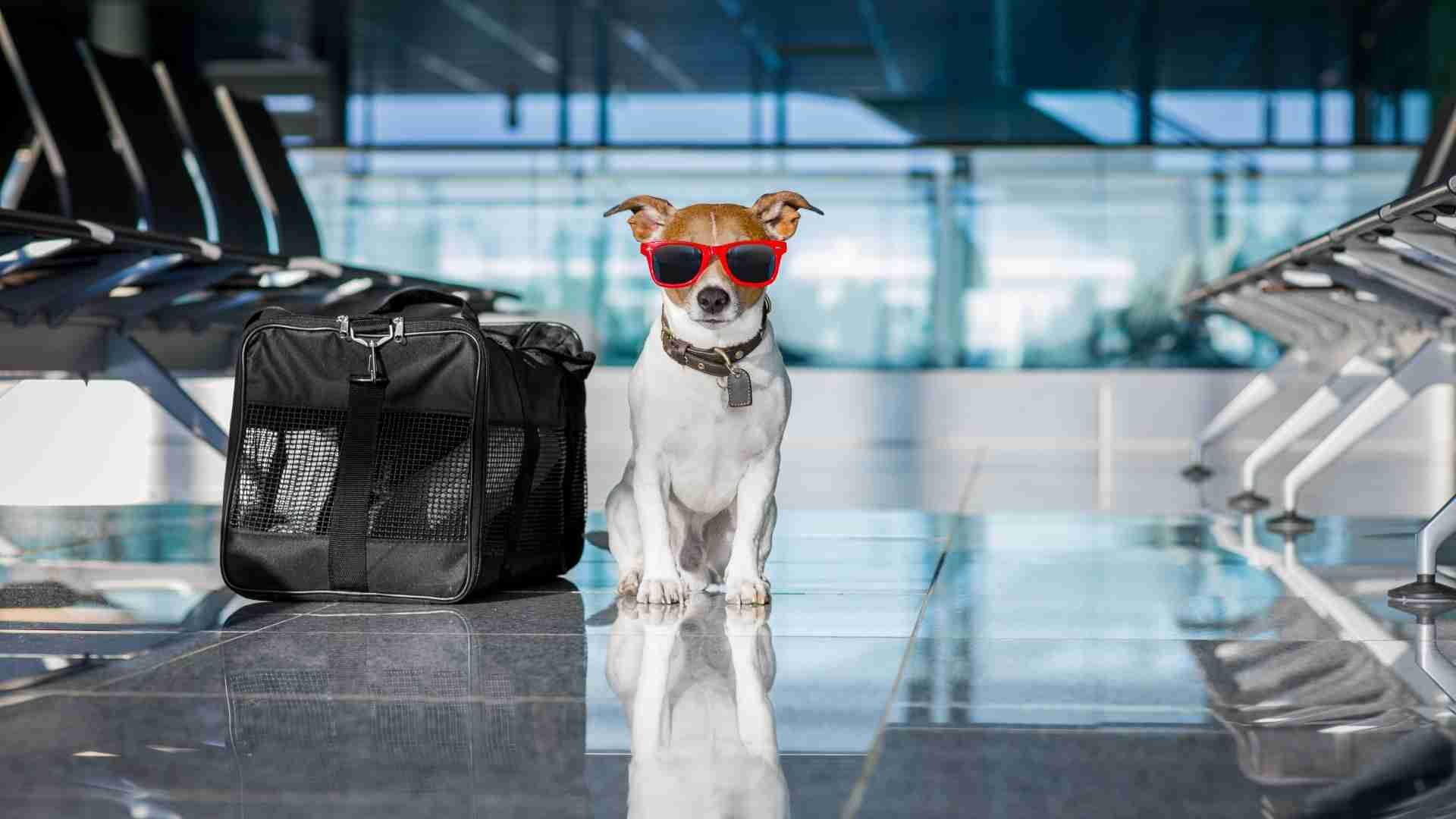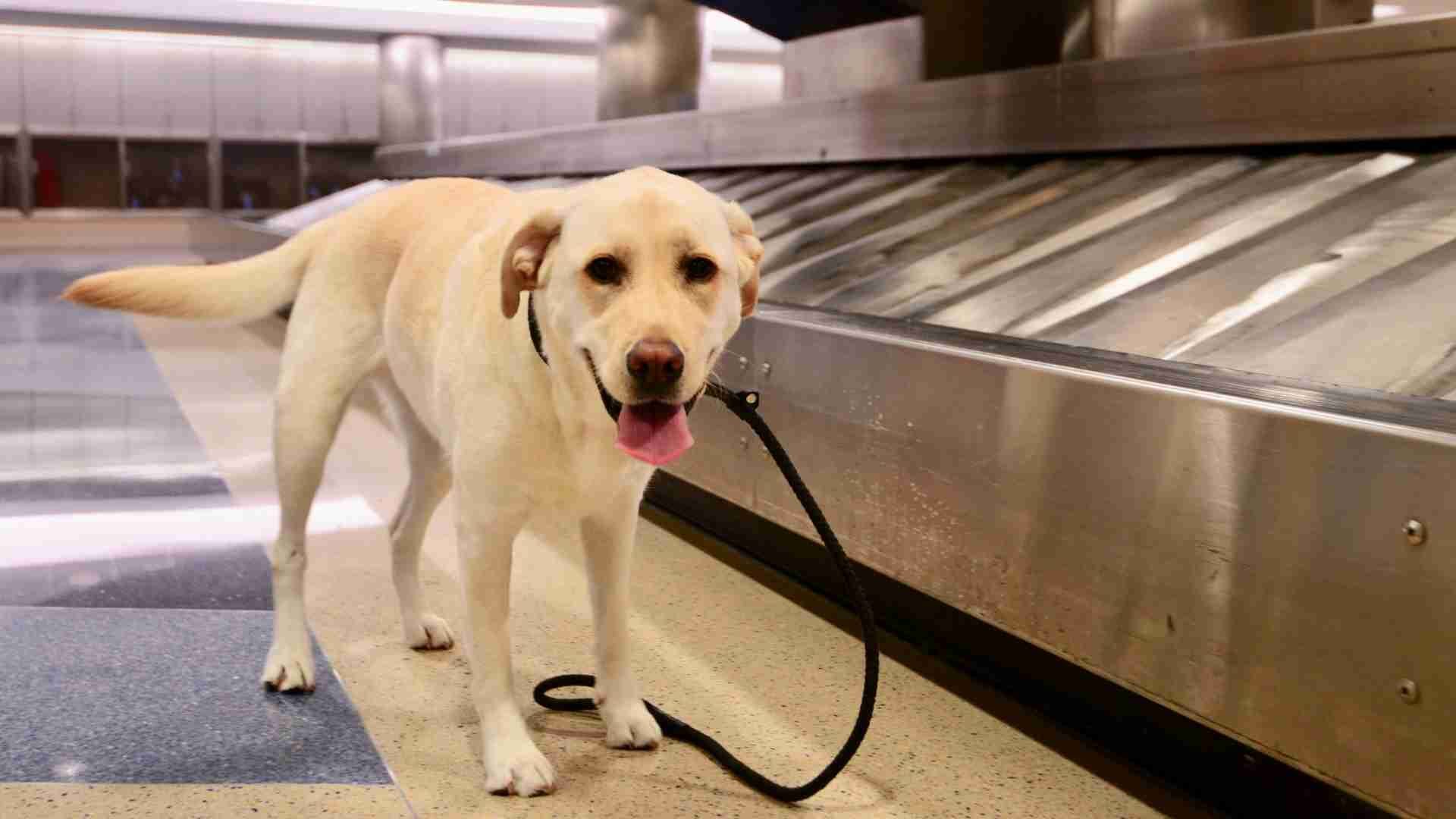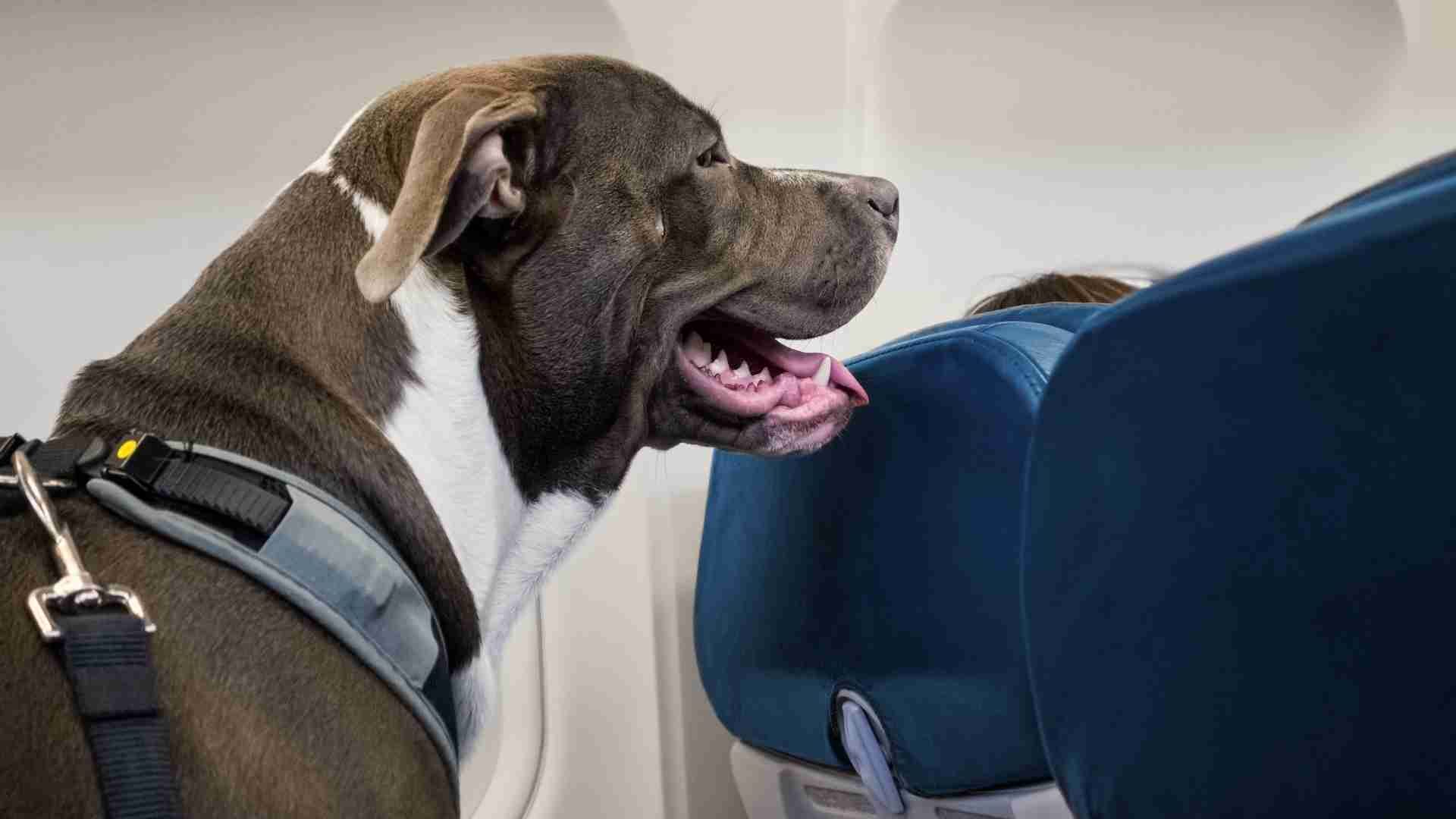Have you ever wondered about flying a dog without an owner? Keep reading to find out.
There are various reasons why pet owners ought to fly a dog without an owner. The seriousness responsible pet owners take their pets displays their care for their safety and comfort while traveling.
Keeping pets in the same setting for their whole lives is neither practical nor possible. When the circumstances permit, it is preferable to ship them rather than placing them for adoption in a local animal shelter or handing them to the pound, where they may be deemed unadoptable.
If you ever consider flying down without an owner within your country, attempt to organize ground transportation if at all possible. This refers to private automotive transportation in the United States.
Inquire with friends or relatives whether they can assist, and make arrangements for them to stay in pet-friendly hotels along the trip. Ground transportation is the best option, especially when airplanes enforce the summer heat embargo. The cost of a round-trip airline ticket pales compared to the value of your peace of mind.
Can dogs fly without their owner?

Yes, and it’s relatively regular. However, policies differ from carrier to carrier, and in any case, the pet owner will have to do some homework and spend some money on flying a dog without an owner.
Several major airlines have distinct freight operations in addition to their passenger operations. Mail, food, human remains, and, you guessed it, live animals, even pets, are all handled by these cargo enterprises. However, not all carriers take live animals, those that do usually include a separate sheet with detailed guidelines for pet owners.
Flying a dog without an owner is identical to screening one as luggage in terms of criteria. Short-nosed dogs, like pugs and boxers, are rarely allowed in the cargo compartment during the warmer months. Of course, you’ll need a kennel, and a veterinarian should examine senior dogs before flying to ensure they can manage the stress.
How much are the expenses to ship a dog without an owner?
The bigger your dog is, the more money it will require on flying a dog without an owner. Large breeds should fly in the cargo section, while tiny species can travel in the interior with their owners underneath the seats. Because all dogs must travel in a carriage on any airline, the dimensions of the carrier and the weight of the dog can be used to calculate the total cost.
Be willing to pay premium prices in terms of costs. Delta’s domestic DASH service costs between $260 and $496 every way. A 26-to-50-pound dog could cost $191.25 to ship from Boston to Chicago via American Airlines.
When is a pet transporter not needed?
Assuming you’ve made plans for your pet’s drop-off and pick-up, you’ll almost certainly need to transport your pet by plane, and your animal will be shipped as cargo. Except for Southwest Carriers, JetBlue, and the smaller commuter airlines, which do not have provisions for pets, almost all airlines welcome pets in shipment. Verify the airline’s rules and limitations for flying with a pet before booking.
Modern airliners include separate cabins for live animals kept at the same pressure and temperature as the cabin. Several airlines have pet-friendly schemes, and some even reward you with frequent flyer miles. Each day, hundreds of pets fly alone and safely arrive at their location.
Keep in mind the summer embargo, which prevents airlines from transporting a pet into the cargo section if the runway temperature exceeds 85 degrees Fahrenheit. If you’re traveling during the summer, look for a flight departs at night. Moreover, when the temperature drops below 45 degrees F, airlines are unlikely to transport dogs. An Acclimation Certificate is required by some airlines.

Flying a dog without an owner is always best done in the spring and fall when the weather is mild. Since your pet would be in the crates for a long journey, make sure to have their identification paperwork and some dry food. If you cannot fly with your dog or cat due to unforeseen circumstances, do not be concerned. Just consider them as you would any other member of your family when it comes to travel plans.
Prepare the APHIS form 7001 from your veterinarian, certifying that your pet is fit enough to fly and clear of parasites.
Make reservations on flying a dog without an owner with the airline’s Air Cargo division (not the Reservation Department). The total weight of the animal and the crate will be used to calculate the fee.
Purchase a pet box that is IATA certified and spacious enough even for your pet to stand up and turn around within. Buy the kennel as soon as feasible, well before the trip, to give your pet time to grow acclimated to it before departure. This page contains information on how to measure your pet for a cage.
What are the Pros and cons of flying a dog without an owner?
Flying a dog without an owner can be a challenging experience. It takes them out of their familiar and comfortable environment. It places them in a situation that includes loud noises, bright lights, thousands of other people, fluctuations in air pressure and interior temperature, and limited access to the restroom.
Unless you have a compelling reason for flying a dog without an owner, leaving them at home is acceptable. Think about enlisting the help of a friend, hiring a pet sitter or relative, or boarding your dog at a certified facility. You could be disappointed for several days, but it’s probably best for your pet in the long term.
Pets should not travel unless their owners relocate permanently or take an extended trip—at least two to four weeks. In theory, unless strictly essential, it is not suggested to fly with a pet.
A few considerations to make while flying a dog without an owner are described below.
1. Proper dog carrier
You’ll have an acceptable pet carrier or cage with you anywhere your pet spends the flight. The International Air Transport Association has a list of pet carrier regulations, which most airlines comply with. In theory, your crate should be formidable, with lots of ventilation, sturdy handles, and a leak-proof bottom. With a label providing your identity, phone number, address, and recipient contact information, prominently designate your pet carrier with the phrases “Live Animal” and arrows that illustrate which way is upward.
2. Airline regulations
As you would expect, Airlines have a slew of rules and regulations for flying a dog without an owner. You must review them carefully to avoid having your pet refuse entry while boarding.
Verify with your favourite airline to learn which dog breeds are permitted to travel with you. Snubbed-nosed breeds are usually prohibited from the cargo compartment because their face anatomy makes it difficult to breathe correctly. Pitbulls and other large breeds may also be banned from flying.
3. Preparation for your journey
Before flying with your pet, always discuss food, drink, and medication with your veterinarian. Experts disagree on whether you should sleep or tranquilize your pets before flying, so assess the benefits and drawbacks with a professional experienced with you and your pet. Moreover, remember that sedation has health threats, and some airlines restrict sedation or demand a veterinarian’s certificate.
Apart from medical issues, acquaint your dog with its box or carrier prior to your journey. You might even bring them to the airport’s departure location just a few times to assist them in getting used to this new environment.
4. Consider the expense of transportation
The cost of flying your pet in the compartment with you is typically about $125 each way, though this varies by airline. The cost of sending your pet in the cargo compartment is determined by your dog’s total weight and carrier and the distance they’ll be traveling—most airlines include online calculators to help you find out how much it will cost.
5. Location of travel
If you’re travelling overseas, the moment you consider bringing your dog along, begin searching into local animal importation laws. Investigate the departing and arriving airports thoroughly so you know precisely which pet alleviation regions are and if they exist.
Many locations have lengthy quarantine periods and frustratingly complicated processes, which could mean you’ll be divided from your dog for most of your trip. Although your dog is modest enough to be a carry-on, some locations do not permit pets to fly in the cabin.
How to fly a dog without an owner?

Below listed in a step-by-step guide on flying a dog without an owner.
- Make an appointment with the veterinarian 7–10 days before your trip to have them examined and ensure they’re fit enough to go and receive any essential vaccines and boosters and a rabies certification.
- Obtain a well-ventilated, size-appropriate crate that complies with your airline’s specifications. Your dog will be confined to the carriers for the entirety of the journey, so it must be ergonomic and let them stand, sit, and spin around.
- Notify your airline ahead of time that you’ll be flying with a dog.
- Purchase and pack any drugs your dog will require during the trip, such as heartworm and flea/tick prevention. It’s also good to bring a copy of your dog’s medication and save a picture of it on your mobile if your dog is on any prescription pills.
- Give your dog drinking water but don’t feed them for around six hours before traveling.
- If you’re flying to or from somewhere hot in the summer, attempt to fly early that morning or late in the evening.
- Most airlines ask that you reach at least 3 hours well before departing time for internal flights and at least 5 hours well before departing time for international flights if your dog is flying cargo. Examine your arrivals and departures airport maps ahead of schedule to see if you’ll have to bring your pet to a different cargo drop-off spot.
How do I know that my dog can fly?
The airline you’re flying with will have the ultimate word. When determining whether or not your pet can board the plane, inspectors will consider its age, health, size, and type.
In terms of age, the National Animal Welfare Act requires dogs and cats to be eight weeks old and completely healthy for at least five days. However, airlines may have older age requirements on flying a dog without an owner. You’ll also need a veterinarian’s certificate stating that your dog is fit enough to fly.
Then there’s the issue of the breed. Short-nosed, snub-nosed dogs and cats such as pugs and Persian cats are more prone than species with longer noses to perish in cargo aboard airlines. They are prohibited from traveling checked or in cargo on several carriers. Small snub-nosed breed owners can bring their pets into the cabin with them. Larger snub-nosed dogs, such as mastiffs or pit bull terriers, aren’t allowed in the cabin since they’re too big.
Carry or Cargo; What’s better to flying a dog without an owner?
The size of your dog will impact where they can sit on the plane, but it may also influence whether or not you bring them along at all.
If your dog is compact enough to fit in a cage beneath the seat in front of you, it can typically travel with you in the cabin (also referred to as a carry-on). If your dog is more important than that, they might have to travel in the freight compartment with the luggage and other goods. Most airlines call this “shipping” your pet.

While airlines claim to do their utmost to make dogs feel at ease in the cargo hold, it’s an uncomfortable experience for your pet—aside from being away from you, goods may shift or fall throughout the journey, which can be loud and frightening.
Sure, many animals fly in freight without issue every year, but there are many unknown circumstances over which you have no authority when you give your pet over to airline workers.
Consider the following scenario: Baggage handlers attempt to complete their tasks and load everything onboard the plane. They are not obligated to provide your dog special attention or care in their cage. Many passengers have told horrific stories about their dogs becoming hurt, sick, and even dying after traveling in the cargo compartment. So, once again, think about whether the potential hazards are worth it.
Watch Is your pet safe flying in cargo | Video
Below are five frequently asked questions (FAQs) related to flying a dog without an owner, followed by appropriate answers.
Is it acceptable if I bring my pet into the cabin?
Pets are not allowed in the passenger cabin. That might be permissible on domestic flights in other nations. However, all pets approaching the UK must travel as declared cargo. Certain airlines may accept pets in the cabins or as extra baggage on flights out of the UK.
Will the X-ray cause any harm to my pet?
The X-ray for additional screening is not as powerful as in hospitals. Therefore, the pet will not be harmed. It can’t be avoided: pets must be x-rayed.
What if my dog requires medical attention?
It will not be appropriate to treat the pet if medication is required during the voyage. You should visit your veterinarian to ensure that your pet will be able to survive the journey.
We can tie this to the flight kennel (along with a veterinarian statement confirming the prescription and dose) if your pet needs medication. We can guarantee that it will arrive at its destination.
Is it okay if I send a toy in with my dog?
If the object could be deemed a choking hazard, it cannot be transported.
What about the meals and beverages?
Before your pet’s flight, we advise that you forego their food. We propose that they only eat a light breakfast if they travel in the evening. They’ll be good on the flight, even if it’s a lengthy one. We people are the only ones who need to eat constantly.
Conclusion

This article explained the requirements and a step-by-step guide on flying a dog without an owner. Special considerations while flying a dog without an owner were also discussed. Frequently asked questions regarding flying a dog without an owner are also answered.
Bottom up
Please comment below about your ideas and share this “Can You Send a Dog on a Plane by Itself: Guide with Cost” article with your friends.
Stay tuned with our website to find out more exciting stuff. Don’t forget to check out our previous articles too.
Until the, Read about, How to Keep Dog from Going Under Bed: Guide to Block




